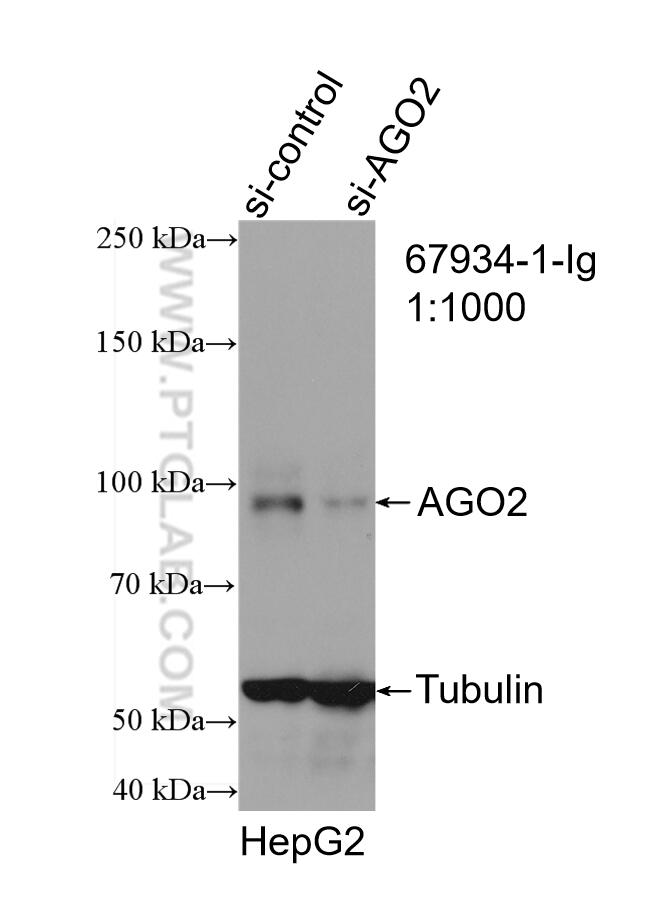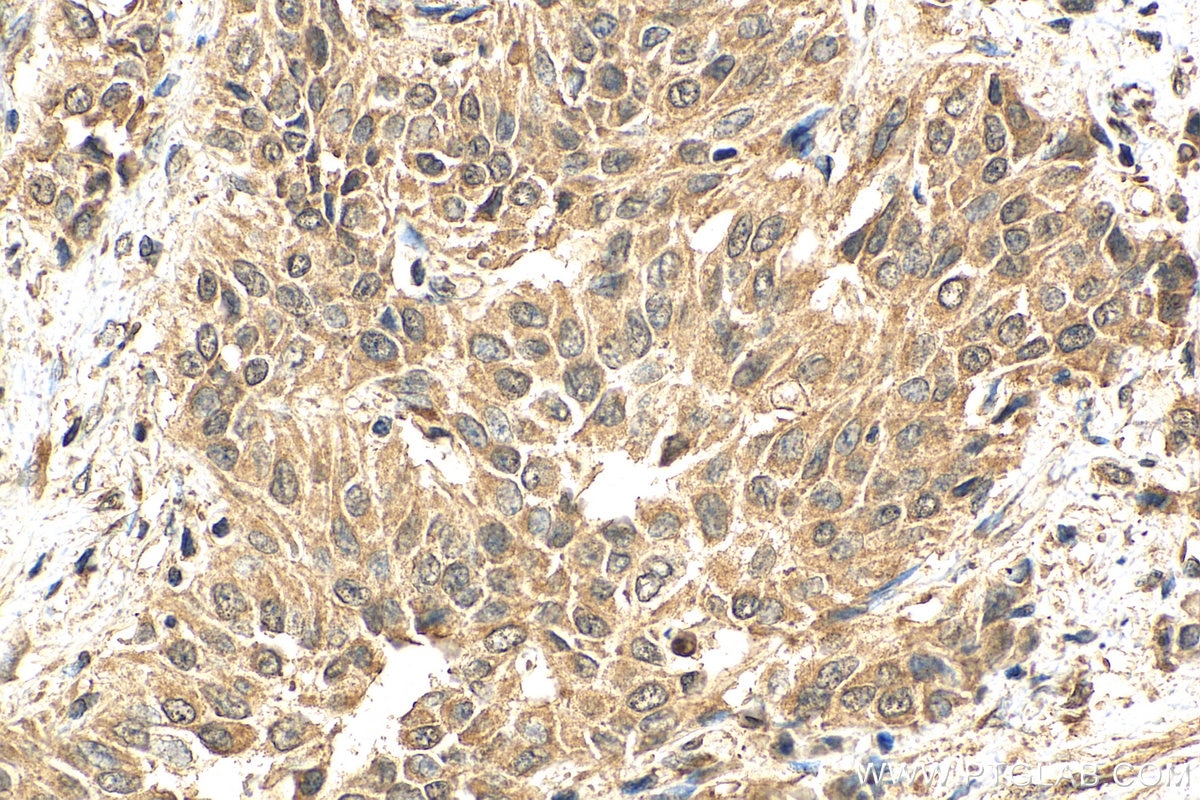Validation Data Gallery
Tested Applications
| Positive WB detected in | LNCaP cells, K-562 cells, 4T1 cells, HepG2 cells, HeLa cells, HEK-293 cells, MCF-7 cells, HSC-T6 cells |
| Positive IHC detected in | human pancreas cancer tissue, human urothelial carcinoma tissue Note: suggested antigen retrieval with TE buffer pH 9.0; (*) Alternatively, antigen retrieval may be performed with citrate buffer pH 6.0 |
| Positive FC (Intra) detected in | HeLa cells |
Recommended dilution
| Application | Dilution |
|---|---|
| Western Blot (WB) | WB : 1:1000-1:5000 |
| Immunohistochemistry (IHC) | IHC : 1:200-1:800 |
| Flow Cytometry (FC) (INTRA) | FC (INTRA) : 0.25 ug per 10^6 cells in a 100 µl suspension |
| It is recommended that this reagent should be titrated in each testing system to obtain optimal results. | |
| Sample-dependent, Check data in validation data gallery. | |
Published Applications
| WB | See 10 publications below |
| IHC | See 1 publications below |
| IF | See 1 publications below |
| IP | See 5 publications below |
| RIP | See 37 publications below |
Product Information
67934-1-Ig targets AGO2 in WB, IHC, IF, FC (Intra), IP, RIP, ELISA applications and shows reactivity with human, mouse, rat samples.
| Tested Reactivity | human, mouse, rat |
| Cited Reactivity | human, mouse, rat, pig |
| Host / Isotype | Mouse / IgG1 |
| Class | Monoclonal |
| Type | Antibody |
| Immunogen | AGO2 fusion protein Ag27772 相同性解析による交差性が予測される生物種 |
| Full Name | eukaryotic translation initiation factor 2C, 2 |
| Calculated molecular weight | 97 kDa |
| Observed molecular weight | 90 kDa |
| GenBank accession number | BC007633 |
| Gene Symbol | EIF2C2 |
| Gene ID (NCBI) | 27161 |
| RRID | AB_2918686 |
| Conjugate | Unconjugated |
| Form | Liquid |
| Purification Method | Protein A purification |
| UNIPROT ID | Q9UKV8 |
| Storage Buffer | PBS with 0.02% sodium azide and 50% glycerol , pH 7.3 |
| Storage Conditions | Store at -20°C. Stable for one year after shipment. Aliquoting is unnecessary for -20oC storage. |
Background Information
EIF2C2, also named as AGO2, belongs to the argonaute family and Ago subfamily. It is required for RNA-mediated gene silencing (RNAi) by the RNA-induced silencing complex (RISC). The 'minimal RISC' appears to include EIF2C2/AGO2 bound to a short guide RNA such as a microRNA (miRNA) or short interfering RNA (siRNA). EIF2C2 may inhibit translation initiation by binding to the 7-methylguanosine cap, thereby preventing the recruitment of the translation initiation factor eIF4-E. It also inhibit translation initiation via interaction with EIF6, which itself binds to the 60S ribosomal subunit and prevents its association with the 40S ribosomal subunit. EIF2C2 can also upregulate the translation of specific mRNAs under certain growth conditions.
Protocols
| Product Specific Protocols | |
|---|---|
| WB protocol for AGO2 antibody 67934-1-Ig | Download protocol |
| IHC protocol for AGO2 antibody 67934-1-Ig | Download protocol |
| FC protocol for AGO2 antibody 67934-1-Ig | Download protocol |
| Standard Protocols | |
|---|---|
| Click here to view our Standard Protocols |
Publications
| Species | Application | Title |
|---|---|---|
Clin Transl Med LncRNA BC promotes lung adenocarcinoma progression by modulating IMPAD1 alternative splicing | ||
Environ Health Perspect Evaluation of Early Biomarkers of Atherosclerosis Associated with Polychlorinated Biphenyl Exposure: An in Vitro and in Vivo Study. | ||
J Med Chem Discovery of a Novel Small-Molecule Inhibitor Disrupting TRBP-Dicer Interaction against Hepatocellular Carcinoma via the Modulation of microRNA Biogenesis. | ||
Life Sci LncRNA PEG11as aggravates cerebral ischemia/reperfusion injury after ischemic stroke through miR-342-5p/PFN1 axis | ||
J Genet Genomics LSM14B coordinates protein component expression in the P-body and controls oocyte maturation | ||
Cancer Sci ELF1 suppresses autophagy to reduce cisplatin resistance via the miR-152-3p/NCAM1/ERK axis in lung cancer cells |






